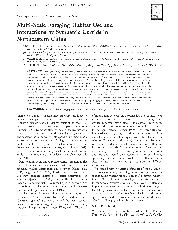摘要
Moose (Alces alces) and roe deer (Capreolus pygargus) are sympatric in the forest region of northeastern China. Using univariate analyses of feeding sign data, we found the 2 species were positively associated, but there were distinctions between their use of forage resources across landscape, patch, and microhabitat scales. We used resource selection function models to predict the influence of environmental covariates on moose and roe deer foraging; we detected covariate effects at the landscape and microhabitat scales but not at the patch scale. Forage resources used by the 2 species were similar, but moose used wetter areas and more low-visibility habitats than did roe deer, which strongly avoided areas with sparse vegetation. Both species were influenced by forage abundance and distribution at the microhabitat scale but exhibited differences in intensity of use of plant species and microhabitats. Moose used areas with deeper snow and avoided hiding cover; roe deer avoided areas with higher total basal areas of tree stems and preferred areas with high plant species richness. For moose, there was a tradeoff in the use of concealment cover between the landscape and microhabitat scales. We detected avoidance by moose of roads where roe deer occurred. Roe deer exhibited more capacity for coping with human disturbance and interspecific interaction. In areas similar to our study area, road closures and suppression of roe deer near roads within 3-5 years postlogging may benefit moose. Furthermore, a mosaic of areas with different logging intervals may contribute to spatial separation of moose and roe deer and promote their coexistence.
- 出版日期2010-5
- 单位东北林业大学
